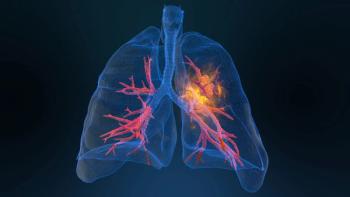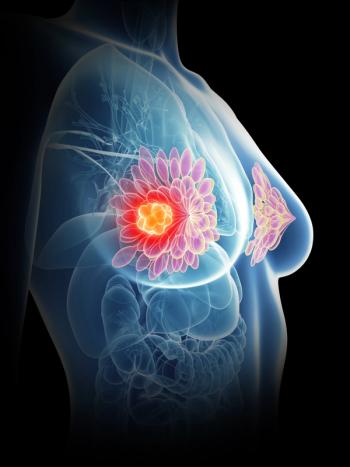
Most Patients with De Novo Metastatic Breast Cancer Harbor Regional Lymph Node Disease
According to researchers, these findings “support the hypothesis that regional nodal disease may precede and contribute to the seeding of distant foci.”
According to a study published in JAMA Network Open, the majority of patients with de novo metastatic breast cancer harbor regional lymph node disease at presentation.
“This finding, which to our knowledge has not been reported before, does not preclude alternative explanations, but does support the hypothesis that regional nodal disease may precede and contribute to the seeding of distant foci,” the authors wrote. “Adjuvant regional nodal irradiation may, therefore, act to eradicate occult nodal disease and thereby mitigate subsequent distant dissemination.”
In this cohort study, researchers evaluated patients who presented with de novo stage IV breast cancer at the Memorial Sloan Kettering Cancer Center from 2006 to 2018. Medical records of each patient were reviewed to determine clinicopathological parameters, including estrogen receptor (ER) status and survival. Additionally, pretreatment PET-CT imaging was also reviewed to validate the extent of regional nodal involvement at metastatic diagnosis using standard nodal assessment criteria.
“Our study used PET-CT for nodal evaluation because it is a reproducible noninvasive imaging modality that is performed for most patients with metastatic breast cancer; moreover, recent studies show that it has high diagnostic accuracy in investigating lymph node metastases,” the authors explained. “Although PET-CT has high specificity for the diagnosis of axillary lymph node involvement, it has low sensitivity for detecting low-volume metastatic disease. To increase the sensitivity of our imaging analysis, we also evaluated lymph node morphological features on CT images, including cortical thickening and absence of a nodal hilum, which are known to be associated with axillary metastasis.”
Notably, a subset of patients underwent regional lymph node biopsy for diagnostic confirmation; this group served to validate the radiographic nodal assessment.
Among a total of 597 women with untreated metastatic breast cancer, 512 (85.8%) showed regional lymph node involvement by PET-CT or nodal biopsy, 509 (85%) had involvement of axillary level I, 328 (55%) had involvement in axillary level II, 136 (23%) had involvement in axillary level III, 101 (17%) had involvement in the supraclavicular fossa, and 96 (16%) had involvement in the internal mammary chain.
Overall, lymph node involvement was found to be more prevalent among ER-negative tumors (92.4%) compared with ER-positive tumors (83.6%). However, nodal involvement at the time of metastatic diagnosis was not associated with overall survival.
“Of note, despite our hypothesis that nodal disease contributes to distant dissemination, evidence is emerging to suggest that [distant metastases] can reseed both the primary tumor bed and regional nodes in retrograde fashion,” added the authors. “Although our findings do not preclude the possibility that metastatic disease precedes regional nodal involvement, or that regional and metastatic deposits might arise simultaneously, neither of these alternatives would necessarily exhibit the reduction in [distant metastases] observed with [regional nodal irradiation].”
Importantly though, approximately half of all the patients with de novo metastatic breast cancer included in the study had evaluable pretreatment PET-CT images and those without such images were excluded, which may have introduced selection bias into the subsequent analyses. However, all contemporary patients who presented to the cancer center at initial evaluation underwent a PET-CT per the current national guidelines.
Moving forward, the investigators indicated that further analyses of the recurrence patterns observed among patients receiving various forms of radiotherapeutic or surgical nodal treatment will aid in determining how regional therapies may be mechanistically associated with distant outcomes.
Reference:
Bitencourt A, Saccarelli CR, Morris EA, et al. Regional Lymph Node Involvement Among Patients With De Novo Metastatic Breast Cancer. JAMA Network Open. doi: 10.1001/jamanetworkopen.2020.18790
Newsletter
Stay up to date on recent advances in the multidisciplinary approach to cancer.


















































































